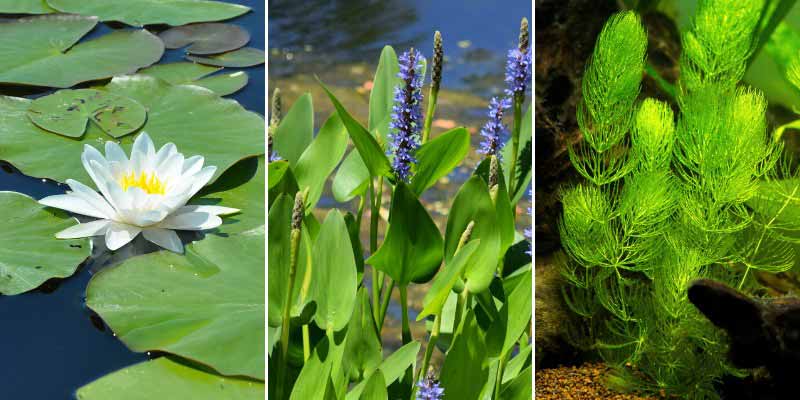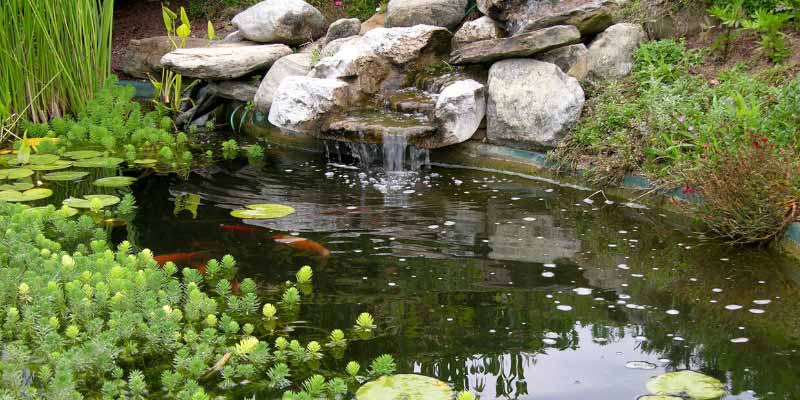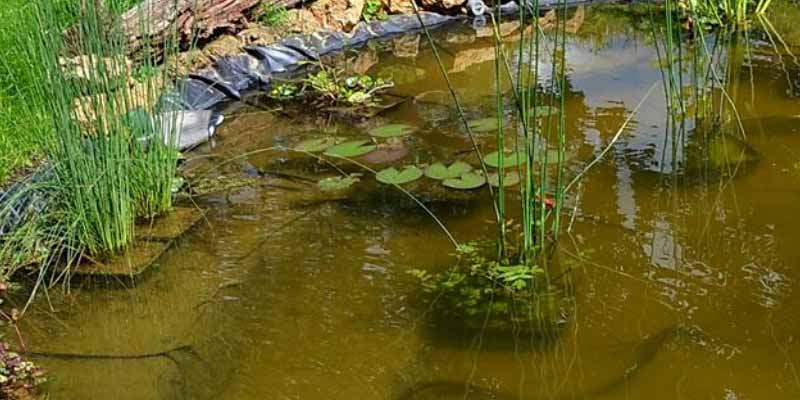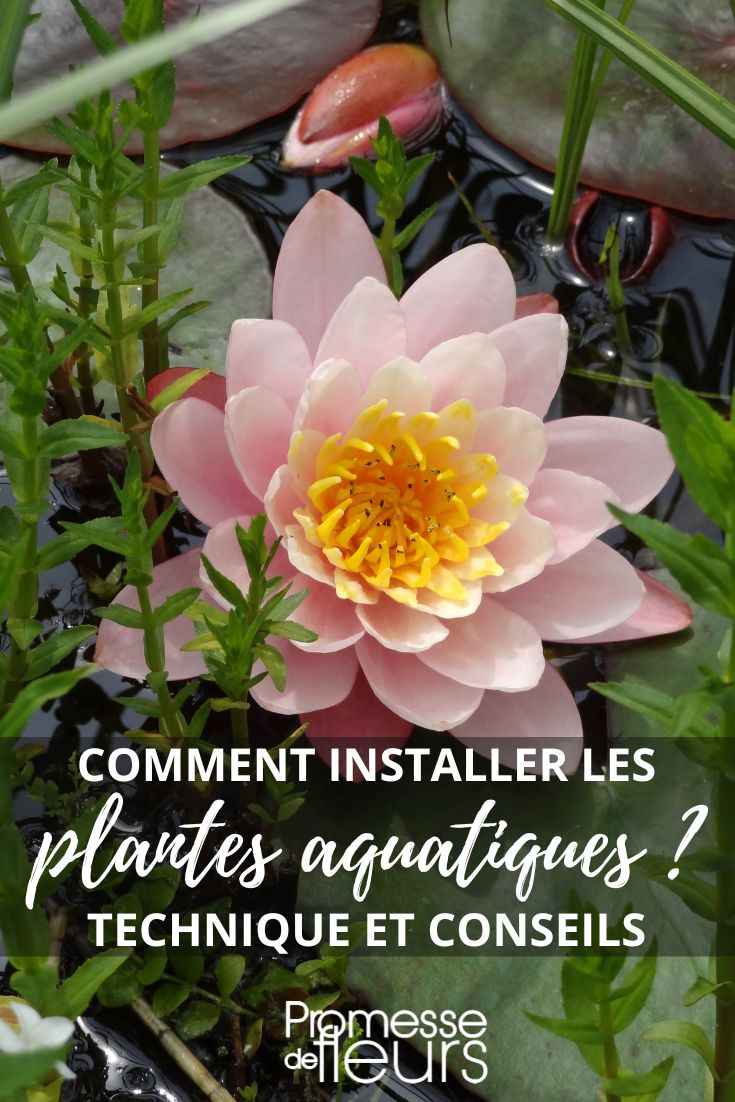Aquatic plants are perfect for planting up a pond. While they undeniably play a decorative role in a body of water, they are also an effective means of maintaining a balanced aquatic ecosystem. They provide filtration and contribute to the clarity and quality of water, rebalancing pH and mineralisation. Floating plants such as water lilies or pondweed are placed in the centre and on the surface, while oxygenating plants such as elodeas or myriophyllums remain submerged and play a vital role in oxygenating the water. Find out when and how to install aquatic plants with our techniques and tips!
Which plants for which use?
Aquatic or semi-aquatic flora is very diverse. Before buying, we recommend checking the hardiness of your aquatic plants and ensuring they are suited to the local climate. Aquatic plants are valued for their purifying and oxygenating qualities. However, they have different needs and do not all fulfil the same role. Distinctions can be made:
- Floating plants, which float on the water surface and root in the silt. With flowers emerging above the water and large leaves, they shade the banks during hot weather and provide shelter for pond wildlife. Examples include: Water lily, pondweed, water chestnut (Trapa natans), Orontium aquaticum, Aponogeton distachyos…
- Emergent plants, which have stems that rise out of the water. In addition to being decorative thanks to the form of their stems and inflorescences, they also possess purifying properties. Examples include: Eleocharis palustris, mare's-tail, Sagittaria sagittifolia, water iris, water hyacinth...
- Submerged plants, which grow entirely under the water. Also called oxygenating plants, they produce oxygen and can concentrate nitrogen and phosphorus, making them purifying, which is beneficial to pond life. They compete with green algae, thus helping to clarify the water. They quickly form dense clumps (sometimes invasive) that provide many refugia for fish. If your pond size allows, we recommend installing two to three species of submerged plants to vary foliage and ensure maximum oxygenation all year round. Examples include: Myriophyllum aquaticum and Myriophyllum spicatum, Elodea canadensis, Ceratophyllum…

When to plant?
Aquatic plants are preferably planted in spring, from March to June, which allows them to establish firmly before summer, the season when they play a key role in the pond ecosystem in terms of filtration and oxygenation. It is also when biological activity in the pond resumes, making the introduction of new plants less stressful for the existing ecosystem. Always ensure aquatic plants are installed at least 4 to 6 weeks after filling any new pond so that CO2 levels in the water are sufficient.
At what depth to plant?
Immersion should be at the recommended depth for each plant. Whether floating, oxygenating submerged or emergent, each plant should occupy the position best suited to it. Some thrive in shallow zones while others establish below 1.50 m of water.
- Floating plants such as water hyacinth or water lilies are positioned in the centre of the pond and on the surface. They require a variable water depth, ranging from 20 to 90 cm. To float freely on the water surface, they must root in the pond bottom. However, some, like water chestnuts, simply rest on the water surface without needing planting in the soil.
- Oxygenating plants such as myriophyllum and ceratophyllum are entirely submerged and are generally found on the pond bottom, under 30 to 150 cm of water.
- Emergent or semi-aquatic plants such as yellow iris, bogbean or sagittaria, should be planted so that their roots are under the water while the rest of the plant emerges. They are often placed in the shallow zones of the pond under 5 cm to 30 cm of water.

How to plant aquatic plants in a pond?
- Use where possible planting baskets specially designed for aquatic plants. Aquatic plants will develop best if planted in containers adapted to their growth.
- Line baskets with hessian, which will allow water circulation while preventing the substrate from dispersing into the pond.
- Fill the planting basket with special pond plant compost. It is heavier and less likely to disperse in the water. Avoid standard potting compost, which is too rich and encourages algal growth.
- Place the plant in the basket, ensuring roots are well spread out or rootstocks firmly anchored. Fill around the roots with substrate, leaving the necessary space for the plant to develop.
- Then cover the substrate with a layer of gravel, stones or pebbles. In addition to weighting the basket, this will hold the substrate in place and prevent fish from digging up the soil and uprooting plants. Also, some plants have few roots; this will help them anchor.
- Gently lower the basket into a shallow part of the pond
- After two or three days of hardening, place the plant in its final location at the indicated depth.

Required equipment
- Special pots for aquatic plants or perforated planting baskets
- Special pond plant compost
- Hessian
- Gravel or pebbles to cover the substrate in pots, which helps keep the compost in place































Comments